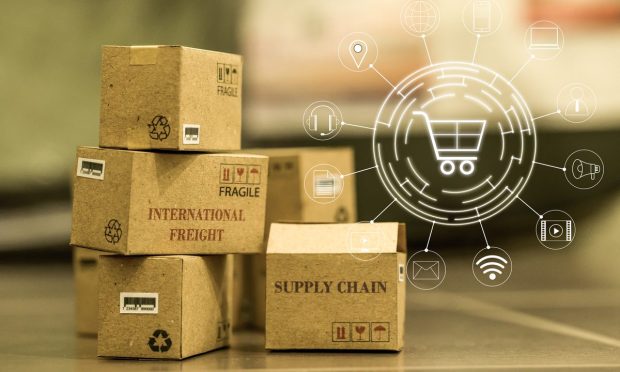International B2B Virtual Card Payment Market Projected to Reach $553B by 2024

Virtual card payments are gaining traction in the business-to-business (B2B) market as firms seek out touchless and mobile payment options and the many benefits they deliver — and this growth is only expected to continue.
Research suggests that B2B virtual card payments are worth $320 billion in annual transaction volume worldwide, and that the global value of the B2B virtual card payments market could reach $553 billion by 2024, per “Enabling B2B Payments for the Virtual Workforce,” a PYMNTS and Conferma Pay collaboration.
Get the report: Enabling B2B Payments for the Virtual Workforce
The adoption of virtual cards in the B2B sphere is being driven by their payments automation benefits, operational cost reductions, prevention of excessive spending, access to real-time spending data and the digital experiences professionals have experienced as consumers.
Automating the Entire B2B Transaction Process
Virtual cards automate the entire B2B transaction process, eliminating the need for manual intervention when finalizing payments to suppliers, for example. This means they can ease the stress placed on accounts payable (AP) departments by reducing employees’ manual tasks and lowering the costs of the entire payments process. Research suggests that AP teams that implement straight-through B2B processing can expect their processing costs to decrease by as much as 70%, making them especially beneficial in an economy in which 72% of small to medium-sized businesses (SMBs) do not have access to enough funds to stay open for more than a month if their revenue streams are disrupted.
Virtual cards can also prevent excessive spending. Payments automatically decline if a technology provider increases its prices significantly above the rate that has been set on a virtual card, for example, and the company would get notified upon the transaction’s decline. Virtual cards also facilitate easier tracking and categorization for expense management. Employees can request access to funds before they are released to make transactions, allowing the firm to better mitigate fraud.
The benefits of utilizing virtual cards extend far beyond spend management. Access to virtual cards’ real-time spending data can also improve how businesses manage their quarterly budgets. The benefits of being able to access that data in real time means that more traditional expense management tools may prove too slow or too complex for companies in just a few short years.
Expecting Digital Payments Experiences
Virtual cards also deliver an experience people are beginning to expect. It is important to recognize that virtual cards’ increased usage for B2B payments goes hand in hand with consumers’ rising interest in using smartphones and mobile wallets for B2C transactions. Consumers are growing accustomed to using their smartphones for everyday purchases, whether tapping digital wallets to make payments at brick-and-mortar stores, on rideshare apps, when ordering food or leveraging card information stored in their mobile browsers to make faster eCommerce payments. As a result, they are naturally beginning to desire and even expect similar digital payments experiences in their professional lives.
This trend has been developing for years, and the COVID-19 pandemic is accelerating it. More businesses are moving to replace their legacy, paper-based operations with digital AP and AR solutions that will allow digital options to become more ubiquitous. This ultimately increases the chances that buyers and suppliers will accept one another’s digital payment methods and create even greater momentum for digital B2B adoption.
